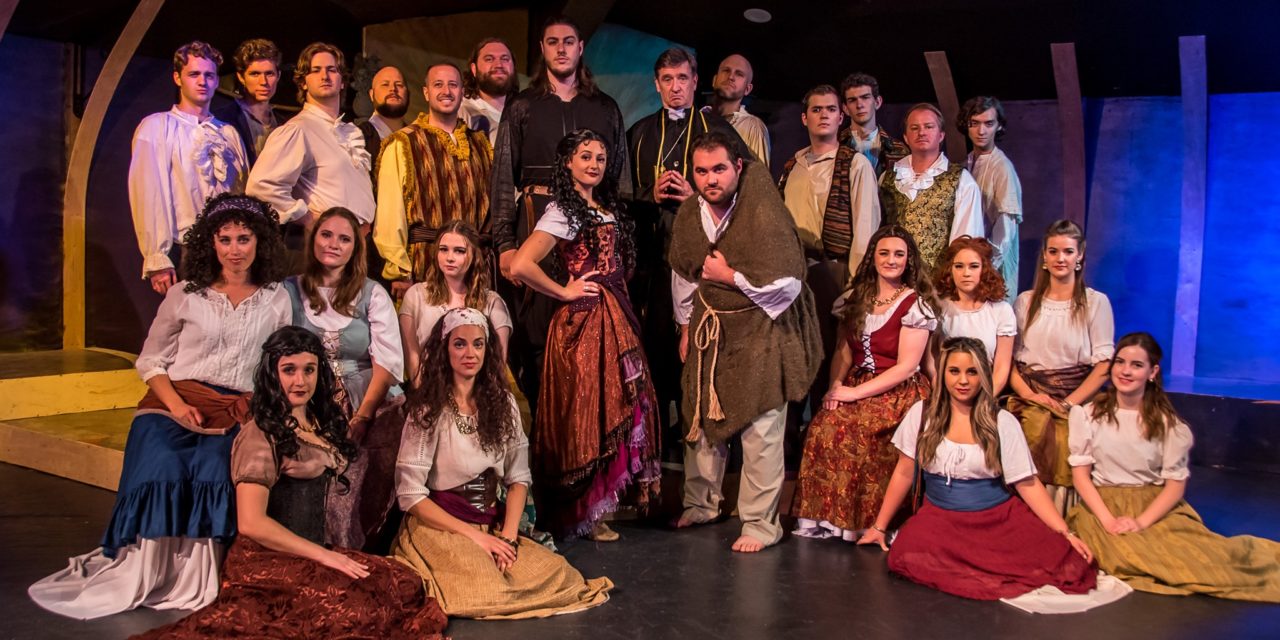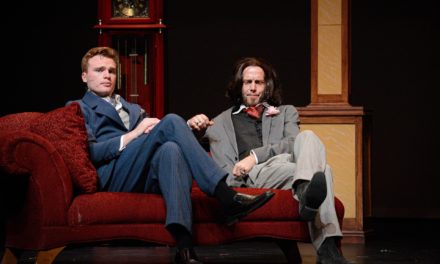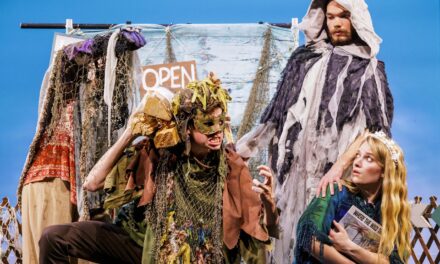KAYSVILLE — The classic story of The Hunchback of Notre Dame dates back to 1831 with the novel published by Victor Hugo. Since that time, it has been retold in many fashions. This particular telling, produced at the Hopebox Theater in Kaysville was written first as a Disney film, and then adapted for the stage first in Germany in 1999 and then brought to the United States in 2014, though it has never appeared on Broadway. With music by the great Alan Menken and lyrics by Stephen Schwartz and a script by Peter Parnell, Hunchback has found life in the regional scene.

Show closes October 23, 2021.
The story follows Quasimodo (played by Dugan Brunker), a deformed man living in the Cathedral of Notre Dame in Paris, who is abused by archdeacon Frollo (played by Brent Sloan). A Romani woman named Esmeralda (played by Jessalyn Kranz) has compassion for Quasimodo, but she is driving Frollo mad while also winning the heart of the soldier Phoebus (played by Stefan Kurzius). While many of the songs come from the 1996 film, this story and production is much darker and more complex, more closely following Hugo’s novel.
Music director Samantha Wursten has done an excellent job with this ensemble, especially with the transitional numbers that serve as narration. The harmonies are haunting and deceivingly complicated, yet this cast has handled them well. Lead costume designer Kennedy Miller has marvelously transported the cast to medieval Europe, especially with the exquisite dresses to the religious attire. I was also taken by the lighting design by Taylor Kurzius, as it set the mood for many songs, from Frollo’s dark “Hellfire,” to Esmeralda’s impassioned plea “God Help the Outcasts.”
Director Brighton Sloan maximizes the small space at the Hopebox. The show flowed easily and kept the attention of the audience, with a mix of humor and seriousness that was well balanced. I enjoyed how, like in the novel, much of the story shows how Notre Dame is its own character, and that was reflected in the set design by Lauri Baird, as well as in the well placed Gargoyle characters played by Brett Johnson, Josh Rogers, and Rachel Peterson.
However, Bruker, in the role of Quasimodo, deserves the most praise. From the moment he started singing “Out There,” I knew that he was perfectly cast for the role. Bruker’s voice was clear and inviting, and the innocence of Quasimodo’s desire showed through. This was even more evident in the song “Heaven’s Light,” which is an even more heartfelt look into what it must be like to live a life of rejection and isolation. Brunker brought depth to the role as well as talent, and I was happy every time he was on stage.

Dugan Brunker as Quasimodo.
The other lead players were fine in their roles, but they did not seem to reach to the level of Brunker in terms of depth. Each had strong voices and matched their characters well, but seemed to lack the strong connection to the character that Brunker consistently. Perhaps as the run continues, that connection will be achieved.
The choreography by Heather Sessions was also a highlight of this production of The Hunchback of Notre Dame, especially during some of the lighter numbers, like “King of Fools” and “Court of Miracles.” As I have said in previous reviews, the Hopebox is limited in space, and that can be difficult when it comes to larger casts, but Sessions and Sloan have done a fine job with spacing and understanding of what can be done with the movement in order to maximize the visual aesthetic and allow for the audience to be entertained while still maintaining the integrity of the show in the space.
The ending of The Hunchback of Notre Dame is tragic, and while more true to the story designed by Hugo, families who are familiar with only the Disney movie version should be advised before bringing their children that this may not reflect the “happily ever after” ending that they are used to. My ten-year-old attended with me and enjoyed it, but it was certainly quite different than what she was used to seeing.




